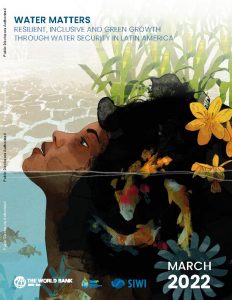Inequality, financing and capacity development flagged as key issues for SDG 6 in Public Dialogue
Participation and accountability are at the core of good water governance. They are also at the core of UN-Water’s Public Dialogue series, established as a means to inform and gather feedback about the findings of the SDG 6 Synthesis Report 2018.

On 20 June, SIWI co-convened with UN-Water and UNESCO-WWAP a side event called ‘Public Dialogue on the SDG 6 synthesis report 2018′ at the High Level International Conference on The International Decade for Action Water for sustainable development 2018-2028 that took place in Dushanbe, Tajikistan.
This side event, one of many being carried out in preparation for the High-Level Political Forum, aimed to collect inputs on the main challenges and opportunities related to SDG 6.
The main themes discussed included:
Inequalities must be eliminated
Every country/community needs to identify were vulnerable groups exist and render those groups visible and active in decision making processes. It’s important to not lose sight of what we are trying to achieve. We need to ask about the journey to achieving SDG 6: how do we get there? How will we go from an idea/vison to action and implementation?
Financing needs to be enhanced
Public resources are not enough. The private sector needs to be involved. We need to build institutions that are strong and trustworthy in order to raise the wiliness of the private sector to invest. One action that can build trust is the creation of good water information systems. These systems can forecast risks, help to avoid costs and help ensure cost recovery. Many institutions may need to restructure to become attractive for support from banks. Reform is not needed only on the infrastructure side (i.e.: reduce water loss during distribution services), but also when it comes to governance and increasing accountability and transparency.
Capacity development
National analysis of gaps in capacity further supported by targeted investments, both technical and academic, are needed to ensure institutional and human capacity for effective water management. Technologies need to be used to leap frog obstacles and help countries implement clean technologies from the beginning. Moreover, improvements in technology and capacity need to be simultaneously implemented as a lack of capacity may impair efficient delivery of technological solutions. New technologies can be used to assess water quality as well as provide data on many other SDG 6 indicators. The use of citizen science and earth observation should be also considered in the monitoring of SDG 6.
Good governance, multi sectoral approach and multi-stakeholder partnerships
To address water stress issues, we need: capacity building, governance and policy development. We must make use of both new and existing technology, as well as include traditional knowledge.
Countries need to be in the driver’s seat for water governance and implementing responsible water management methods. Strong institutions are needed to implement IWRM, as it is a complex process. We need to be able to show direct and clear impacts and results; especially when accessing funding opportunities.
You can participate in the Public Dialogue online by visiting http://www.unwater.org/public-dialogue-on-sdg-6-synthesis-report-2018-on-water-and-sanitation/ and completing a brief survey. Do your part and raise your voice today.







